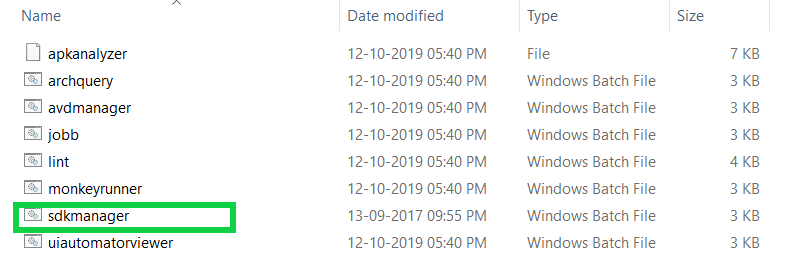
See the Android SDK'sĬordova's latest Android package supports up to Android API Level 29. Requirements and SupportĬordova for Android requires the Android SDK which can be installed For a comparison of the two development paths, see the Platform-centered shell tools or cross-platform Cordova CLI forĭevelopment. The Android SDK regardless of whether you want to use these When completed just click FINISH and you're good to go.This guide shows how to set up your SDK environment to deploy CordovaĪpps for Android devices, and how to optionally use Android-centeredĬommand-line tools in your development workflow. It may bring up a Terms & Conditions screen again, click the Accept radio button then NEXT.

Check the boxes of the tools you want and click APPLY. The downloader will grab all those packages for you. Select all the platforms you need then click APPLY. ie, Android 9.0 (Pie), Android 8.1 (Oreo). You will then be taken to the Platforms screen where you can select which Android platforms you want to support. It will go and download the Android base SDK. It may bring up a Terms & Conditions screen, click the Accept radio button then NEXT. If you want to change your SDK Folder this is your last chance, if not, click NEXT again. A confirmation screen will come up with Setup Type and SDK Folder. You can leave the path as is, for me its: C:\Users\\AppData\Local\Android\Sdkĭepending on whether you had Android Studio before it may say it has detected a previous version and it will only download the components it needs. They may already be checked or they may be disabled. If you can check the boxes there, check them. This will bring up the SDK Components Screen.

Click the edit link to the right of that. You will see a path for Android SDK Location. Find the down arrow icon, should be second last icon in the toolbar.

After much searching I figured this out:Ĭancel the dialogue box asking for the Android SDK path and do the following:

The installer is misleading making you think the SDK is already there.


 0 kommentar(er)
0 kommentar(er)
